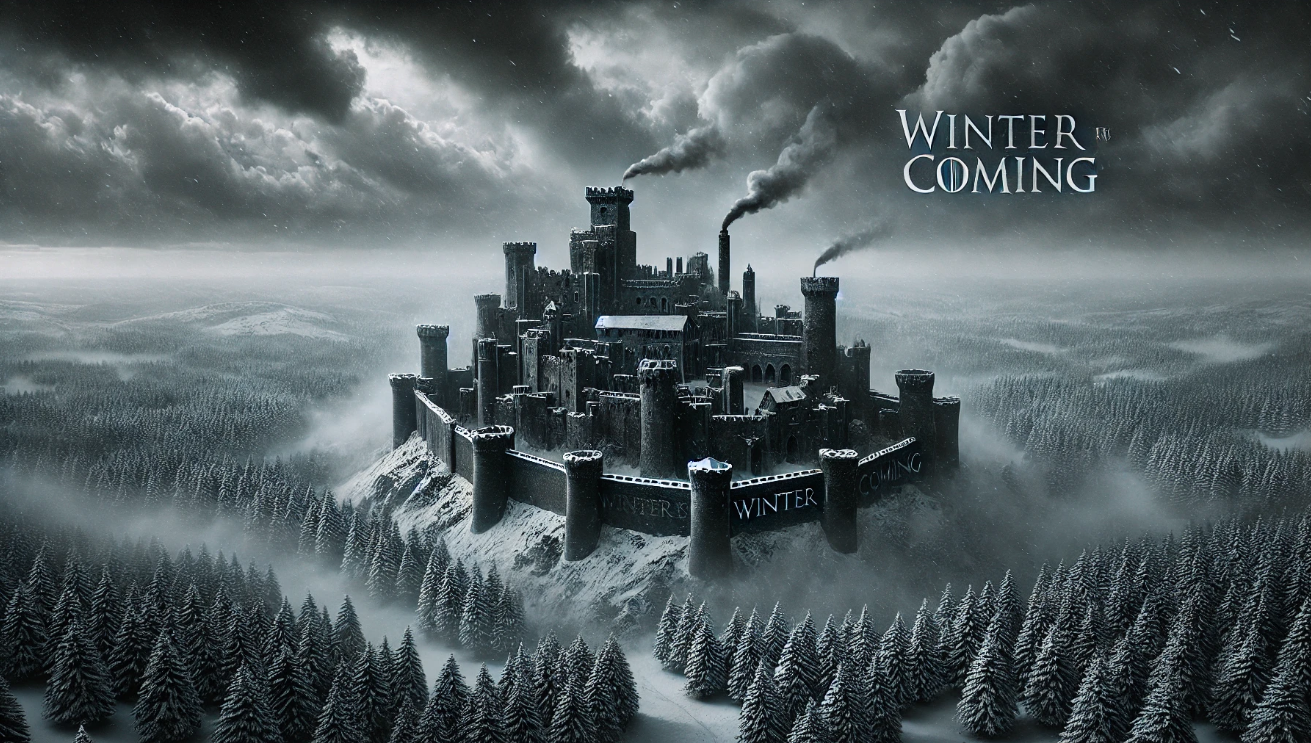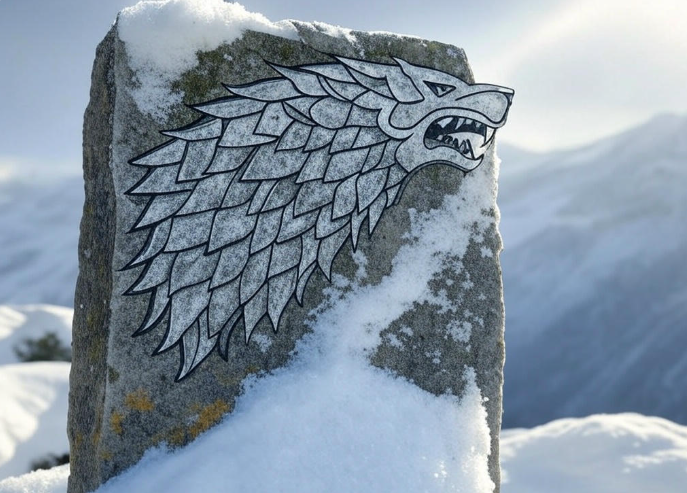
House Stark is one of the oldest and most influential noble families in Westeros. Known for their unwavering sense of honor, resilience, and loyalty, the Starks have been an integral part of the history and culture of the North for generations. Their ancestral home, Winterfell, has stood as a symbol of their strength and tradition. The family motto, “Winter is Coming,” reflects their preparedness and determination to weather any storm. With a storied lineage and a legacy of leadership, House Stark continues to command respect and admiration throughout the realm.
The Stark family has played a pivotal role in shaping the history of Westeros, from their legendary origins in the Age of Heroes to their prominent presence in the events of Game of Thrones. This thesis will explore the journey of the Stark family, examining their impact on Westerosi history and the significance of their role in the narrative of the series.
The Origins of House Stark: The Age of Heroes
Bran the Builder is a legendary figure in the history of House Stark, credited with the construction of both Winterfell and the Wall. According to legend, he was also involved in the founding of House Stark. His impact on the early history of the North is immense, and his legacy continues to shape the identity of House Stark. During the Long Night, the Starks played a significant role in the fight against the White Walkers. As one of the oldest and most powerful houses in the North, they were instrumental in organizing the defense of the realm. It is said that the legendary hero, known as the Last Hero, was a Stark, and that they were crucial in rallying the North against the threat of the White Walkers.
Winterfell was established as the ancestral seat of House Stark, serving as a symbol of their power and influence in the North. It has been the primary residence of the ruling family for generations, and its strong, ancient walls and sprawling grounds are a testament to the enduring legacy of the Starks. Winterfell’s strategic location and formidable defenses make it a key stronghold in the North, playing a crucial role in the region’s history and politics. Its establishment has solidified the Stark family’s position as leaders of the North, and it continues to hold great significance in the world of Westeros.

The Kings in the North
The Starks rose to power as Kings in the North through a combination of strategic alliances, military prowess, and a strong sense of honor and duty. They united various northern clans under their leadership by forming alliances through marriage and demonstrating their commitment to protecting the North. Key moments of their rule as Kings in the North include their defense of the North against external threats, such as repelling invasions from the Ironborn and fending off attacks from wildling tribes beyond the Wall. The Starks also played a pivotal role in the War of the Five Kings, asserting their claim to the North and rallying their bannermen to fight against external forces seeking to conquer their lands.

The Starks During the Andal Invasion
The Starks were able to preserve their traditions and Old Gods worship despite the Andal invasion through a combination of strategic alliances and fierce resistance. They maintained a strong connection to their ancestral lands and the ancient practices of their people, which helped them resist the influence of the Andals. Additionally, the Starks formed alliances with other northern houses who shared their beliefs, allowing them to collectively resist the Andals and maintain their traditions. The Starks’ resilience and determination played a crucial role in preserving their unique culture and religious practices in the face of outside threats.
The Andal invasion had a significant impact on the political and cultural landscape of the North. Before their arrival, the North was primarily inhabited by the First Men, who had their own distinct cultural and religious practices. However, with the arrival of the Andals, there was a clash of cultures and a shift in power dynamics. Politically, the Andals brought with them a feudal system of governance, which replaced the more decentralized and egalitarian structures of the First Men. This led to the establishment of noble houses and a system of vassalage, which continues to shape the political landscape of the North in the present day.

The Starks Under Targaryen Rule
The Starks maintained autonomy while bending the knee to Aegon the Conqueror by establishing a unique relationship with the Iron Throne. Despite pledging loyalty to the Targaryen dynasty, the Starks were able to maintain a level of autonomy in the North. They were known for their reputation for loyalty and honor, and their relative isolation from southern politics allowed them to govern their own lands and people while still acknowledging the authority of the Iron Throne. This allowed the Starks to maintain their own unique culture and traditions while still being part of the larger realm.
The Stark Legacy in the Era of Robert’s Rebellion
The events leading to Robert’s Rebellion were a culmination of tensions between the Targaryen dynasty and several noble houses, including the Starks. Lyanna Stark’s abduction by Rhaegar Targaryen, and her subsequent death, served as a catalyst for the rebellion. Rickard Stark’s execution by the Mad King further fueled the Stark’s determination to overthrow the Targaryens. Ned Stark played a pivotal role in the rebellion, leading the Northern forces in several key battles. He was instrumental in the defeat of the Targaryen forces at the Battle of the Trident and the subsequent fall of King’s Landing.
The Starks in the Game of Thrones Era
The Fall of House Stark was a significant event during the War of the Five Kings, marked by the execution of Ned Stark and the betrayal of Robb Stark at the infamous Red Wedding. These events led to the family’s downfall and scattered the Stark children across Westeros. Arya, Sansa, and Bran each embarked on their own harrowing journeys in the aftermath of their family’s downfall. Arya sought revenge and honed her skills as an assassin, Sansa endured captivity and manipulation before emerging as a resilient leader, and Bran developed his abilities as the Three-Eyed Raven, navigating the complexities of his newfound powers.
Key Themes in Stark History
The values of honor and duty have been central to the Stark family’s choices and consequences throughout their history. From Ned Stark’s unwavering commitment to his principles to Jon Snow’s sense of duty to protect the realm, these values have shaped their actions and the outcomes of their decisions. Memory, loyalty, and tradition have played a crucial role in shaping the Stark legacy. The saying “The North Remembers” speaks to the importance of honoring the past and staying true to their ancestral traditions. Loyalty to their family and their people has been a defining characteristic of the Starks, and their commitment to upholding their traditions has continued to define their identity. The Stark family has demonstrated remarkable survival and resilience in the face of immense hardship.

The Legacy of House Stark
House Stark has had a significant impact on the political and cultural history of Westeros. As one of the oldest and most noble houses in the region, the Starks have been known for their strong sense of honor, loyalty, and resilience. They played a key role in unifying the Seven Kingdoms under one ruler and maintained a position of influence and power throughout the centuries. The Starks’ ancestral home, Winterfell, has served as a symbol of stability and strength in the North, and their leadership has been crucial in defending the realm against external threats, particularly during the long winters. Their commitment to protecting the North and its people has earned them the respect and admiration of many throughout Westeros.
Conclusion
The history of House Stark dates back to the mythical Age of Heroes, with their founder, Bran the Builder, constructing the Wall and Winterfell. Throughout the centuries, the Starks played a significant role in the politics and conflicts of Westeros, with notable members such as King Torrhen Stark, who bent the knee to Aegon the Conqueror, and Eddard Stark, who served as Hand of the King to Robert Baratheon. The Stark family faced numerous trials and tribulations, including the infamous Red Wedding, which resulted in the deaths of Robb Stark and Catelyn Stark.
The enduring legacy of House Stark is one that embodies honor, resilience, and the ability to adapt to a changing world. Throughout the generations, the Starks have been known for their unwavering commitment to their values, their ability to overcome adversity, and their willingness to evolve with the times. Their influence can still be felt in the world of Westeros and beyond, as they continue to inspire others with their enduring legacy.

